These books are RUBBISH
︎Explore ‘the book’ as a way of expressing creativity:
Proving that inspiration is all around us, our everyday world will offer up prompts, ideas and themes to inspire. We will explore sustainable creativity to create recycled publications and develop a narrative, we will revaluate waste materials by adding value to what would otherwise be discarded.
During this fun, explorative workshop, we’ll create a book filled with sustainable creative pages which reflect the way you interact with materials and space around you. It will tell a story about your interests and favourite things. Follow the videos, step-by-step for the activities.
︎CLICK HERE if you would like to access the text only version of this session
︎Hello! My name is Kaynat and I will be working through These Books are RUBBISH with you. Please follow along with me as I show you how to make some simple folded books.
This is what we’ll be covering today:
︎Intro
︎Warm up
︎T Book
︎Snake Book
︎Ideas for your book
︎Assembling your book
︎Intro
︎Warm up
︎T Book
︎Snake Book
︎Ideas for your book
︎Assembling your book
To take part in the session, you will need:
︎Scissors
︎Ruler
︎Pencil/markers/crayons (anything to draw with)
︎Scrap paper (A4 for the books)
︎Timer
︎Scissors
︎Ruler
︎Pencil/markers/crayons (anything to draw with)
︎Scrap paper (A4 for the books)
︎Timer
Additional resources:
︎Magazine clippings
︎Envelopes
︎Photographs for collages
︎Scrap materials, such as old envelopes, magazine pages, clean food packaging.
︎Any other scrap materials to fill the book with (think about things in the recyling but ensure it’s clean and safe to work with!)
︎Magazine clippings
︎Envelopes
︎Photographs for collages
︎Scrap materials, such as old envelopes, magazine pages, clean food packaging.
︎Any other scrap materials to fill the book with (think about things in the recyling but ensure it’s clean and safe to work with!)
︎Intro
Meet Kaynat, a Fine Art student at UWE as she welcomes you to These books are RUBBISH. She’ll show you some of her own work, the studio space and what it’s like to study at UWE.
︎ Warm Up
To get warmed up, let’s follow along with Kaynat as she makes her first book page using her favourite item as inspiration. We can stick this in our book later.
Draw a picture of your favourite item and write down the adjectives that describe it.
︎Can you remember what an adjective is?
They are words that help us to describe things.
︎T Book
Now that we’ve made our first page, we need to make a book to keep it in.
Let’s start with a T Book, we can fold it from a single piece of paper, perhaps you want to start with a page from a magazine or a scrap piece of paper?
︎ Snake Book
This is another type of book you can make a Snake Book.
We can fold it from a single piece of paper, perhaps you want to start with a page from a magazine or a scrap piece of paper?
︎ Ideas for your book
Now that you know how to make two different types of book, let’s think at what you want to put inside yours? Do you have an idea already?
Here are some ideas for your book:
︎Favourite day
What words and colours would you use to describe your favourite day? It could your first day of school or a day out with your family.
︎Favourite snack
What could your favourite snack wrapper or packaging be used as? Could it be cut into bits, or used to find out more about the ingredients in it?
︎Make your own poem
What would it be like if you picked a page with text and highlighted your favourite words on the page to make your own poem by cutting it out or blocking out the other words?
︎Map your house
If you had to make a map of your house for someone to navigate through, what would this look like? What are some of the important or favourite rooms and items that exist in your home?
︎Make your own bookmark
Could you find interesting patterns or images and cut it to a rectangle to make that a bookmark for your books? It could perhaps have your name and some colours on it.
︎You can find more prompts HERE
Let’s look at some examples of RUBBISH books:
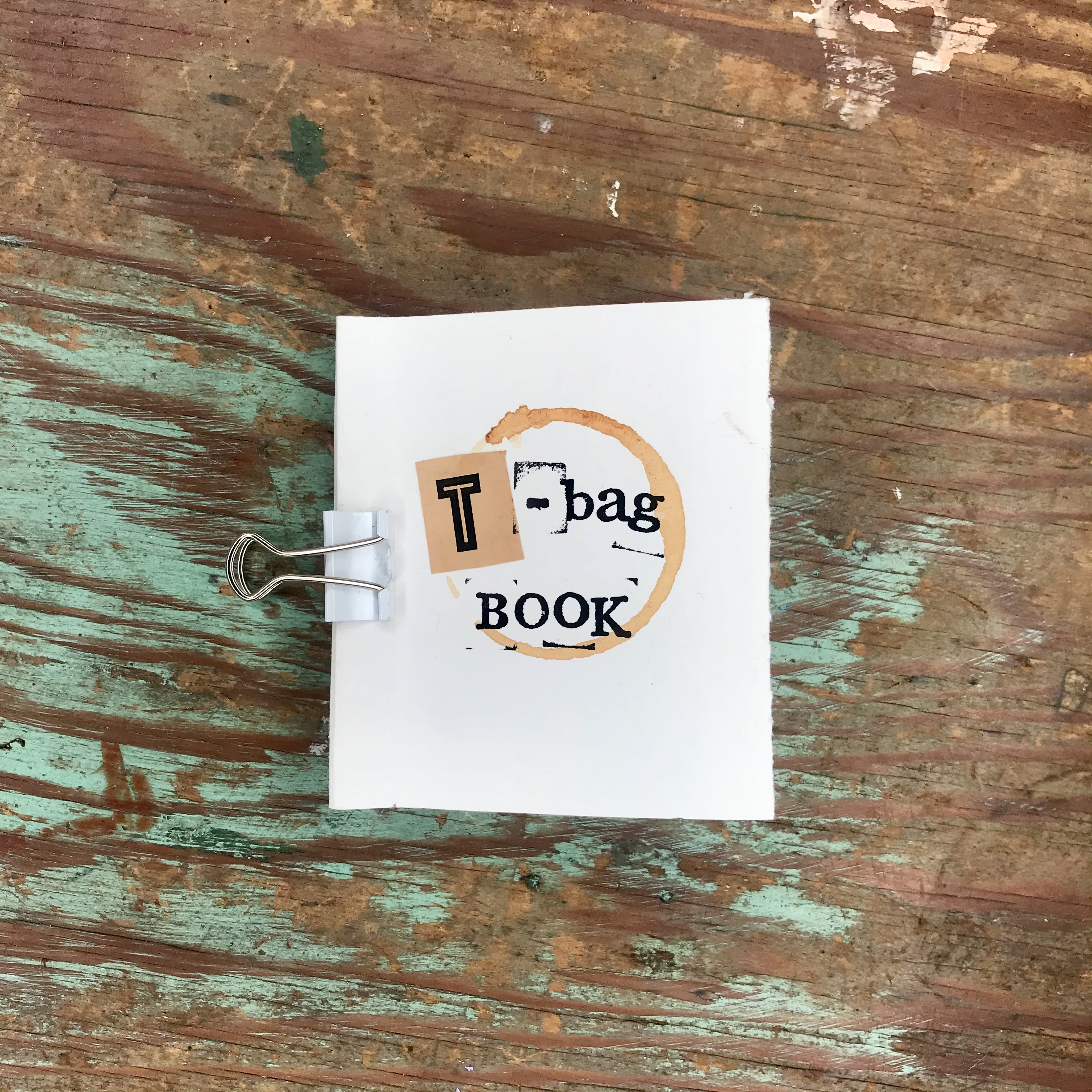

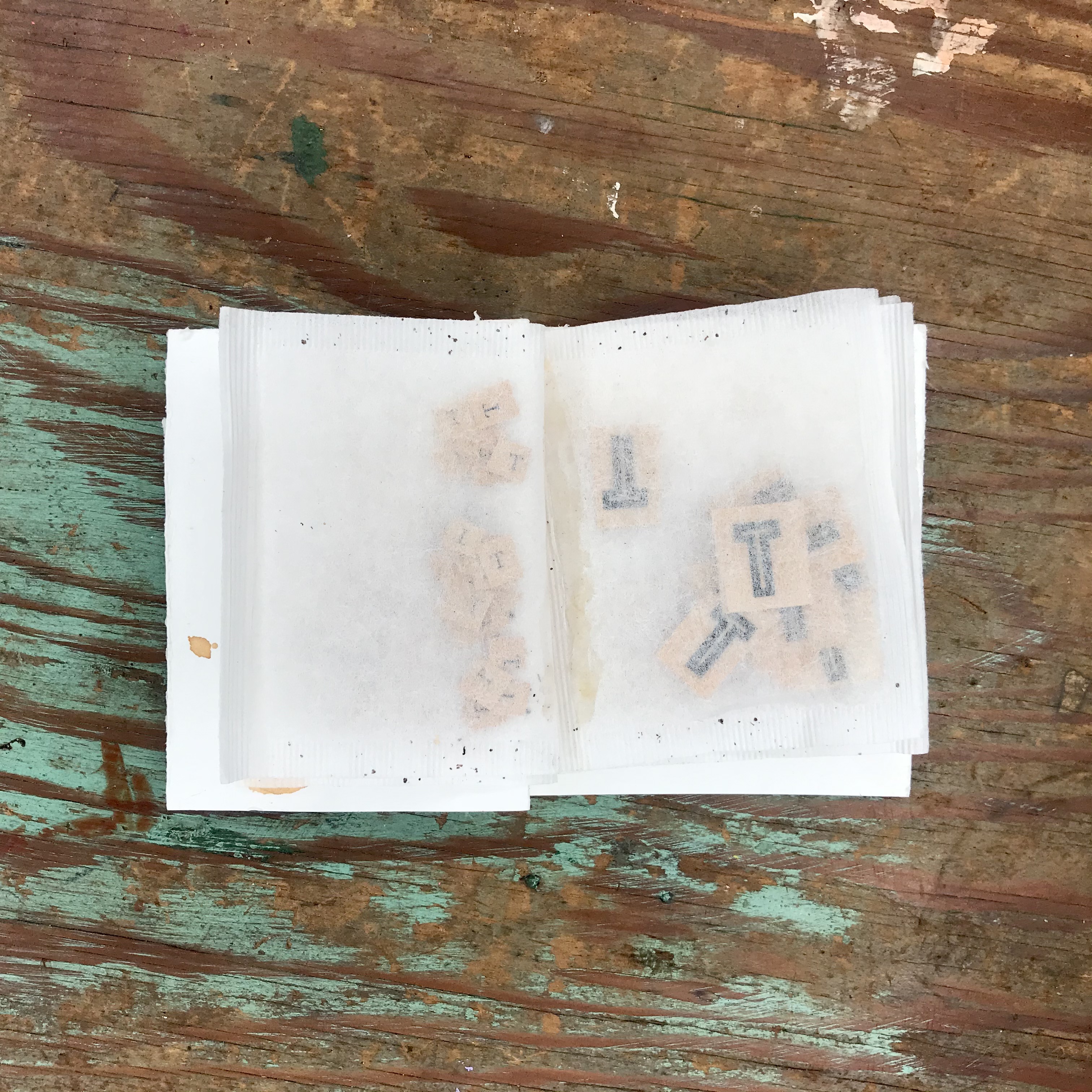
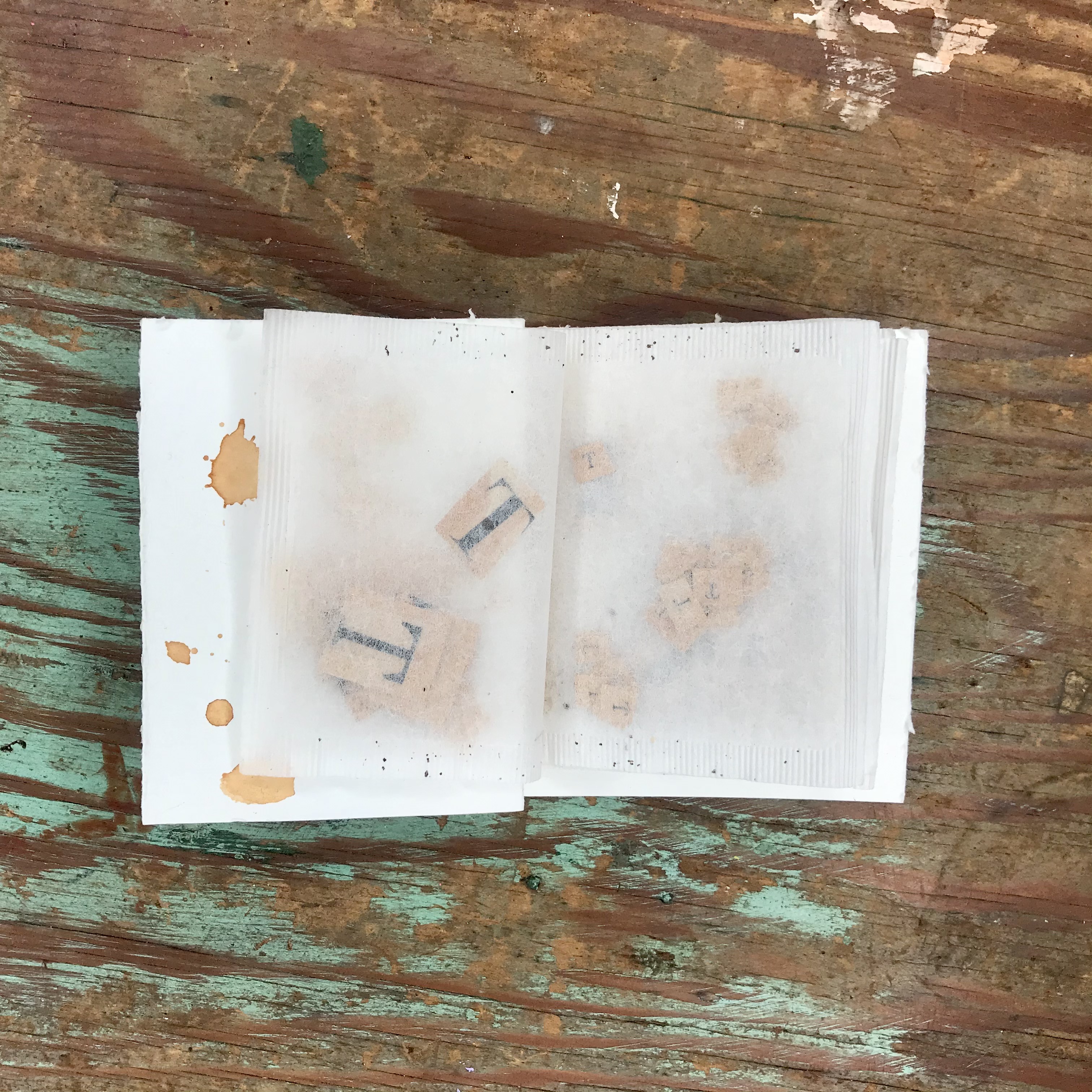


︎Tea Bag Book
︎Jo Barnfield
︎ABC Member
Jo made this book from T Bags. First, she carefully cut the edge of each teabag and removed the tea, setting it aside for later. Then, she filled each bag back up with lot’s of different sizes and shapes of the letter ‘T’. Using the tea removed from the bags, she stained the paper and dipped the bottom of her mug into it to make a print for the cover. The book is held together by a small bulldog clip.
︎CLICK HERE to find out more about UWE’s ABC (Artist Book Club)
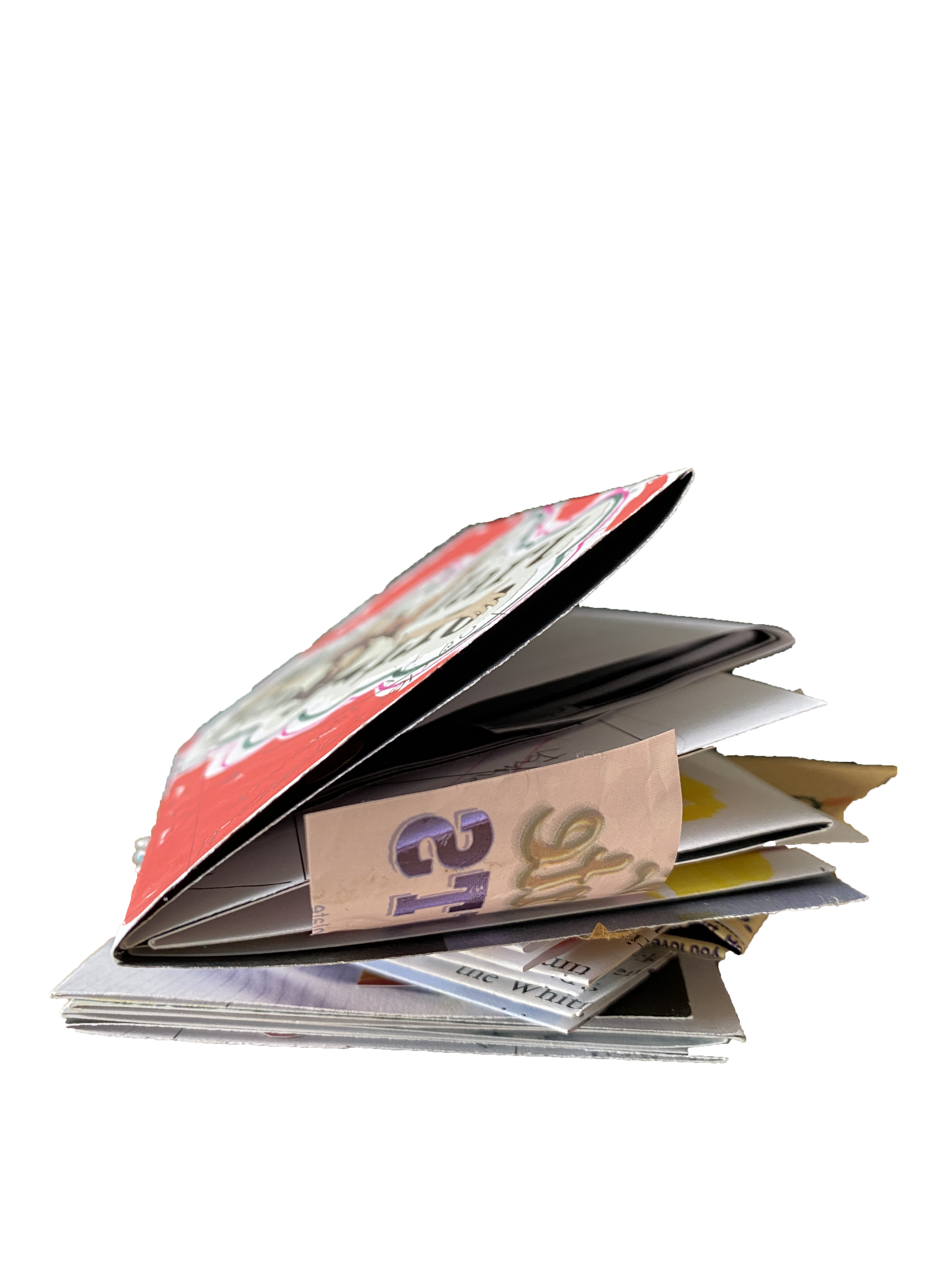

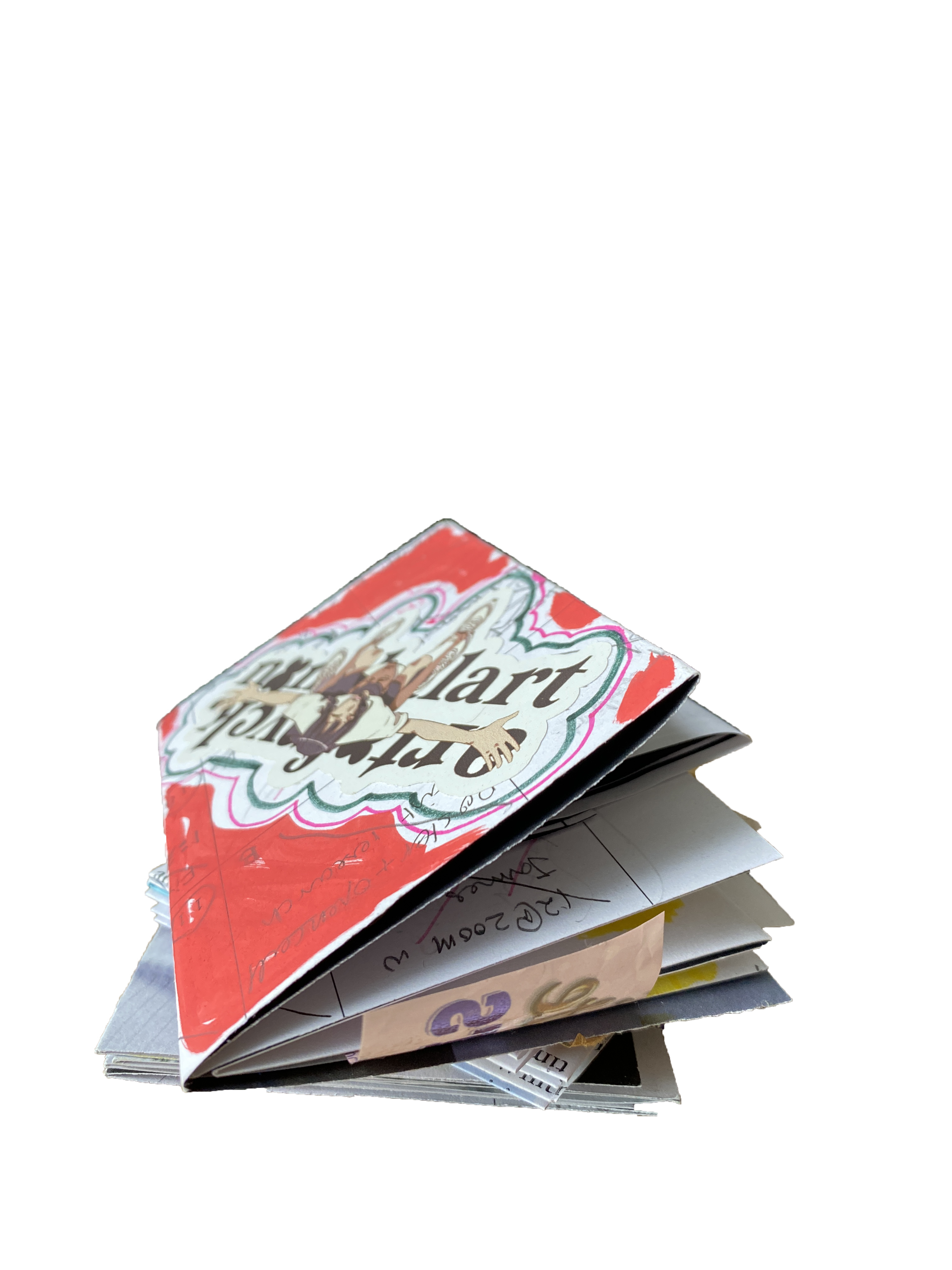
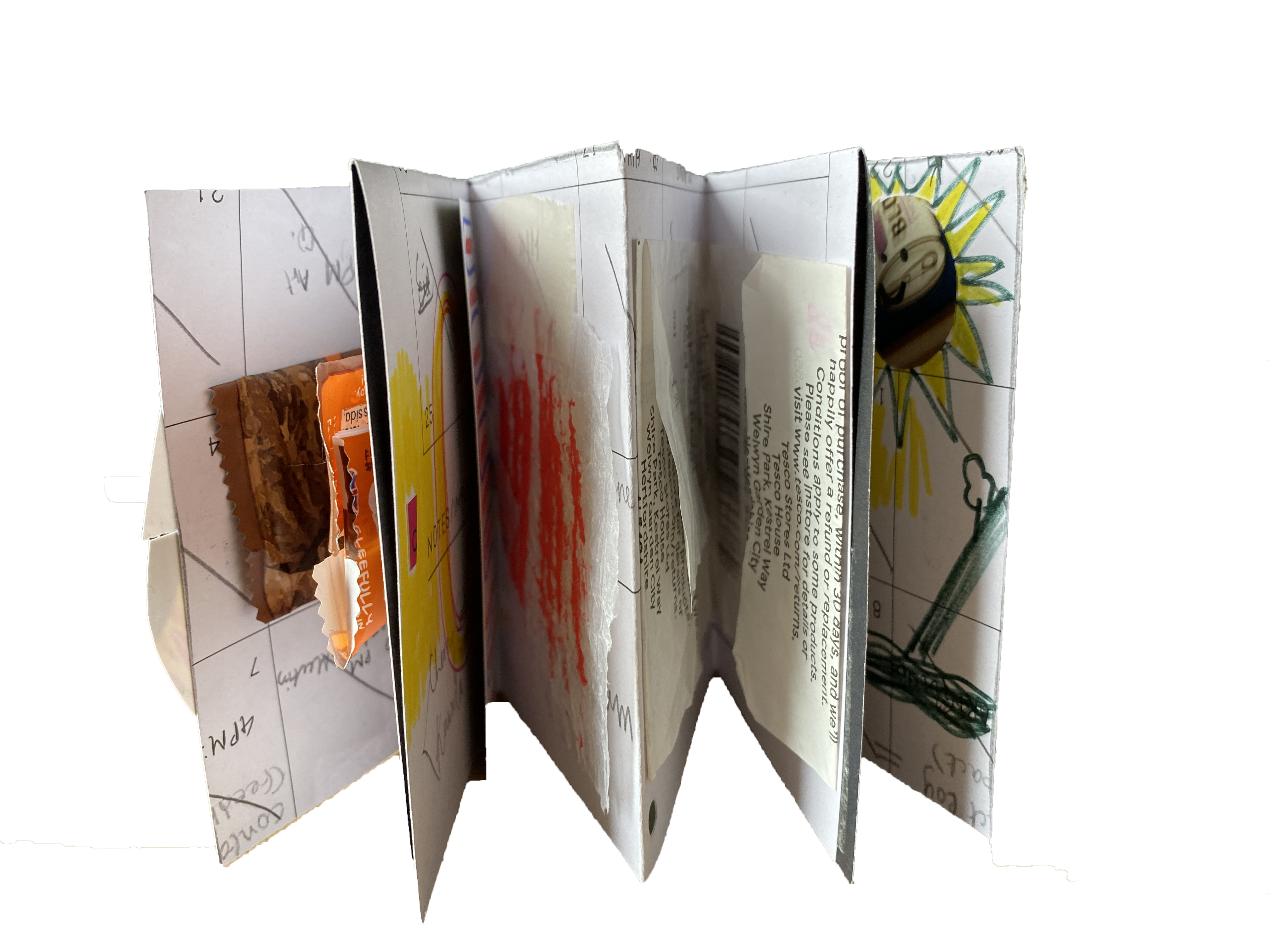
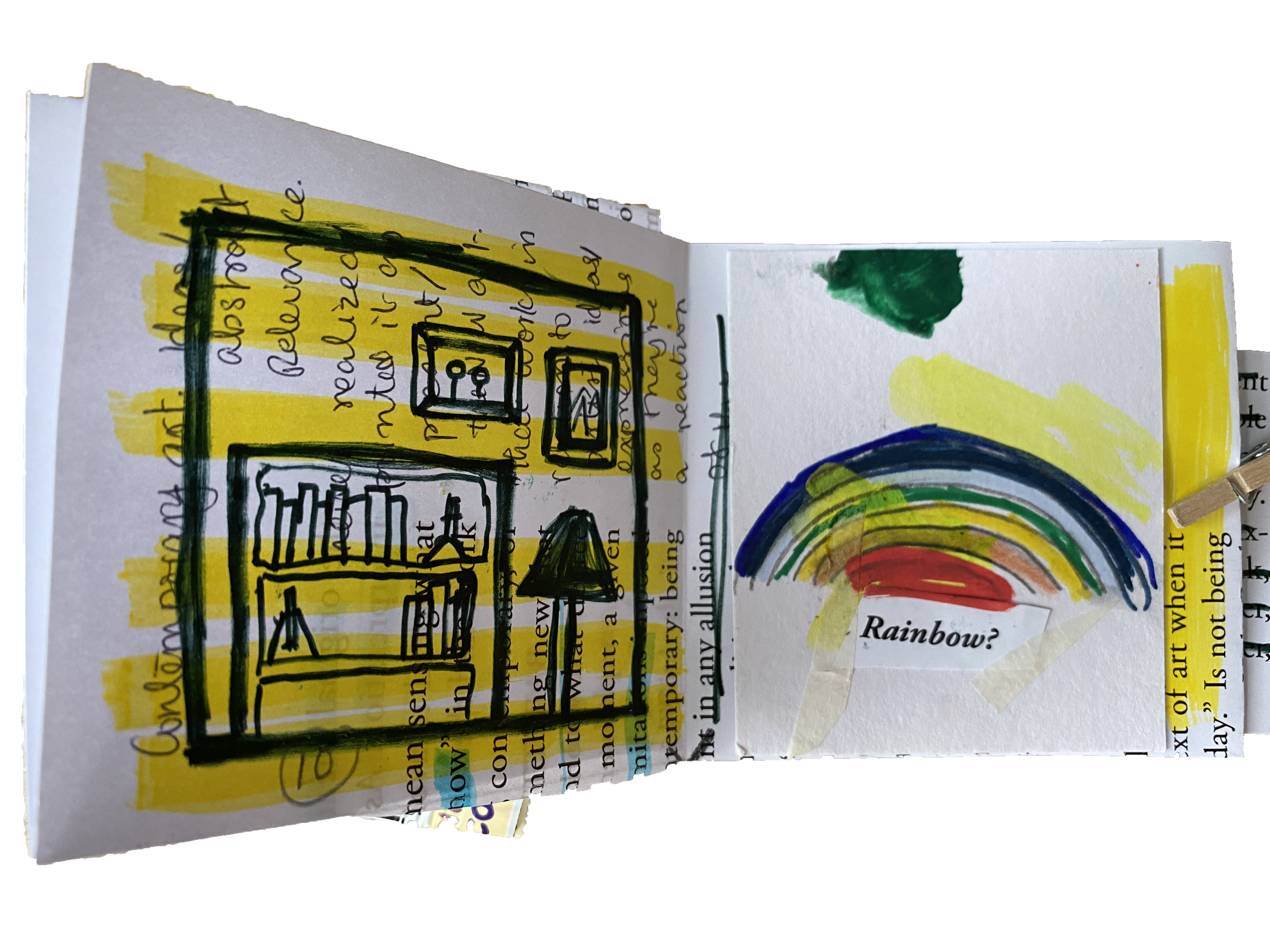

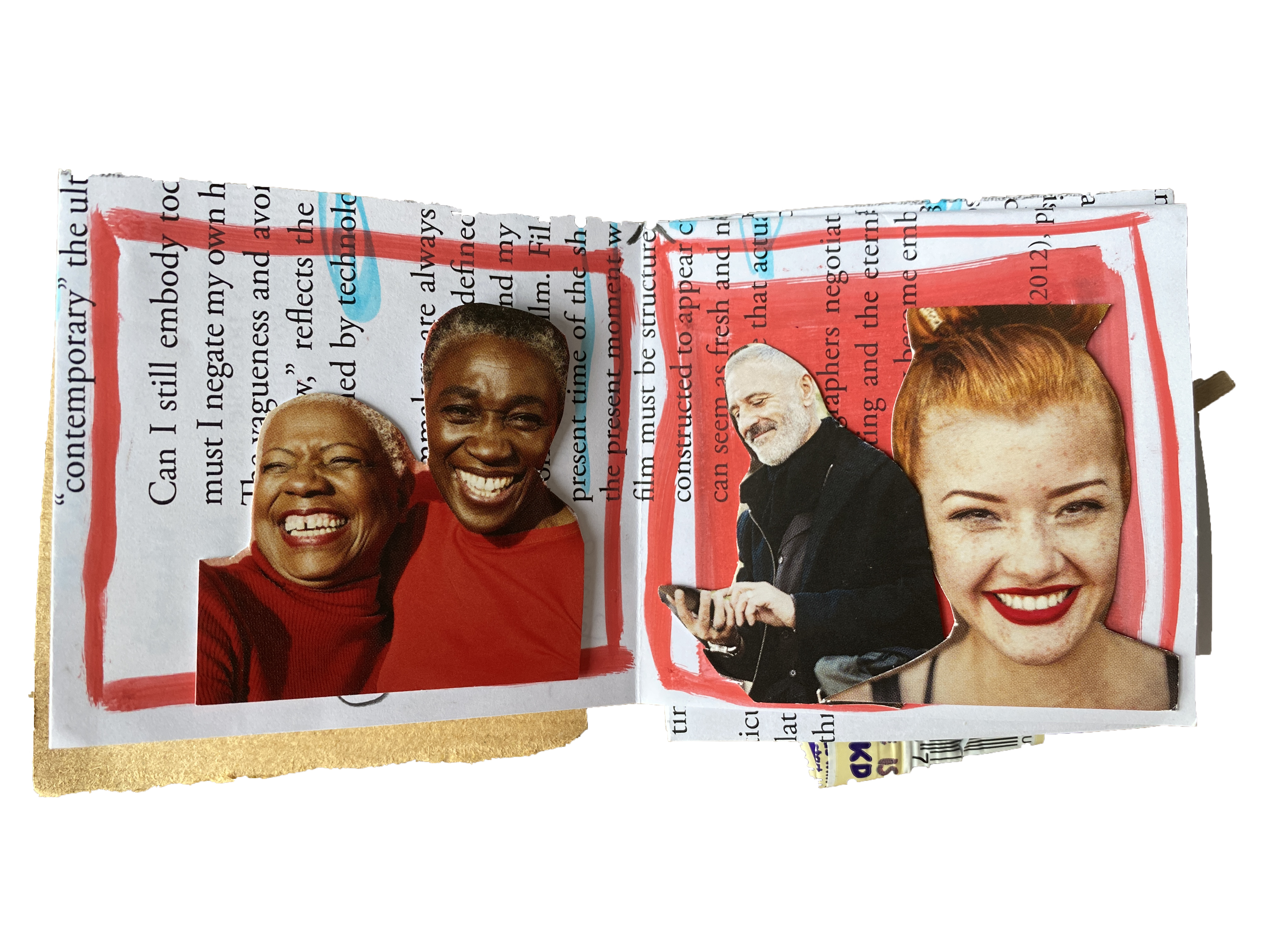
︎T Book
︎Kaynat Kader
︎Fine Art Student
Kaynat made this simple folded T Book using a single piece of paper and clippings from different magazines to make poems and landscapes. She started off with an old calendar as the base sheet and then used marker pens throughout to add some colour. To finish off, she added found items such as reciepts, stickers and food packaging.
︎CLICK HERE to see more of Kaynat’s Work

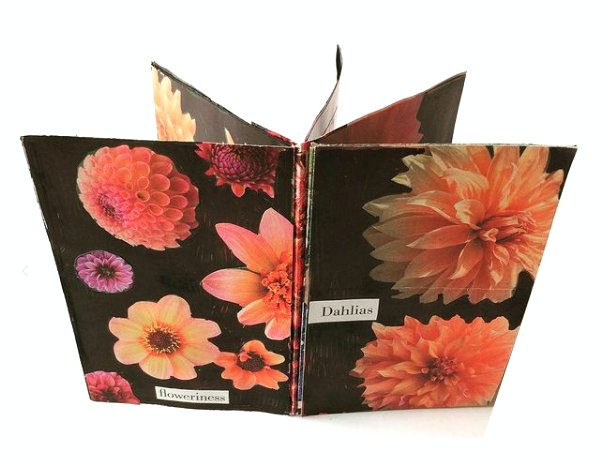
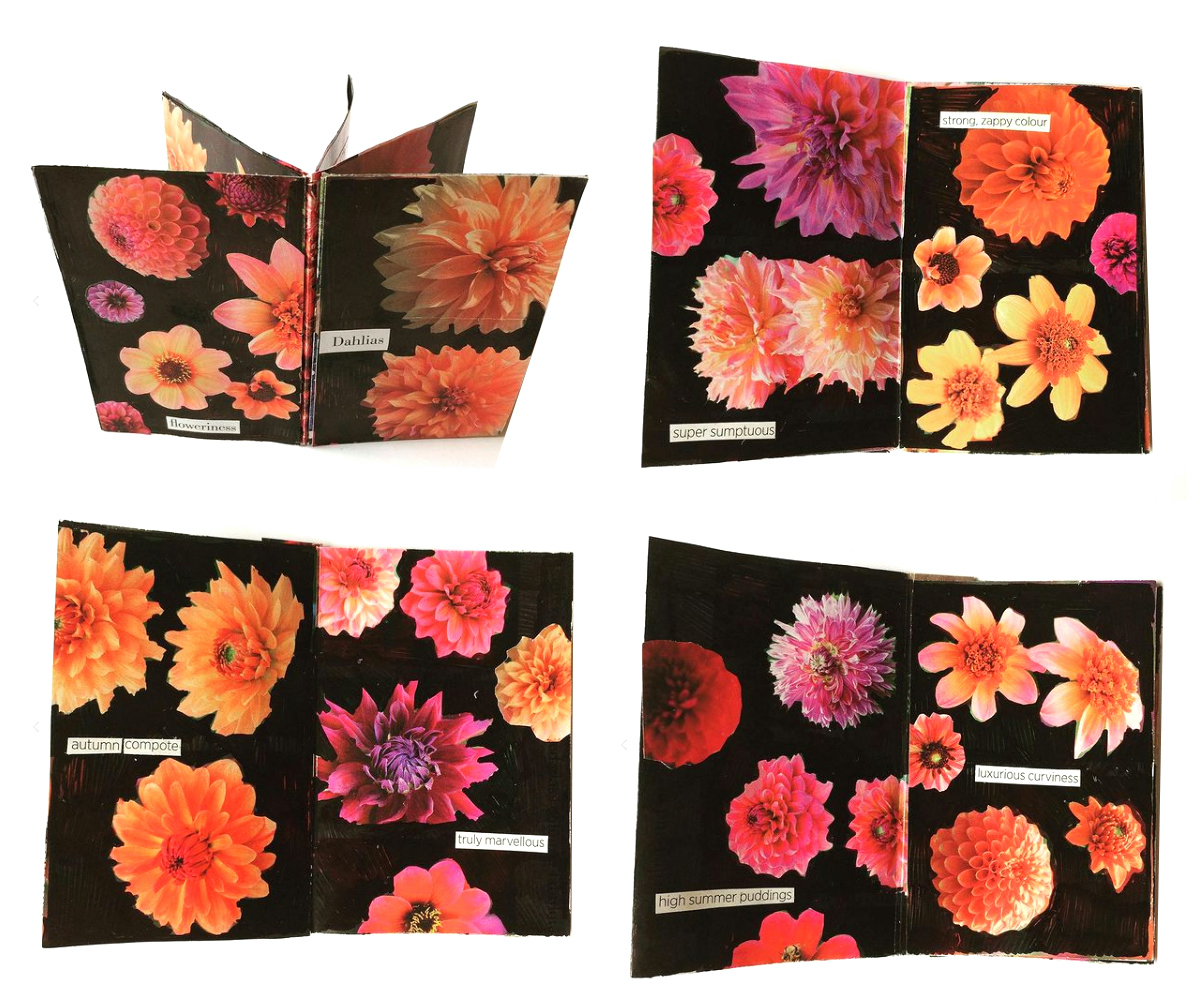


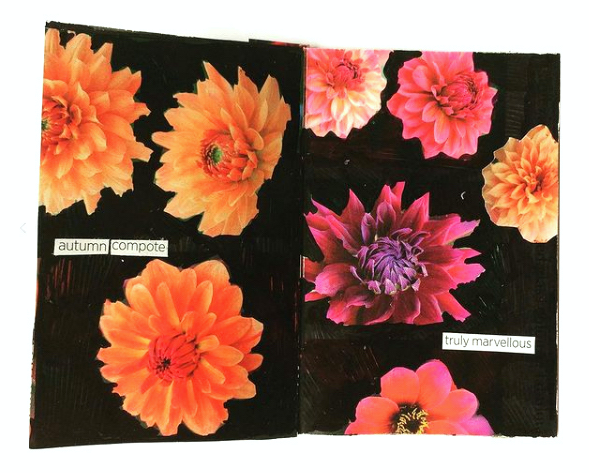
︎Flower Book
︎Corinne Welch
︎ABC Member
Corinne folded a page of a garden catalogue down into a single sheet T Book. Then she blacked out the background with a Sharpie pen, leaving just the dahlias on show. She then cut out some more flowers and glued them down with some of the text into the gaps. The book is held together with a spine made from a piece of folded paper from the catalogue.
︎CLICK HERE to find out more about UWE’s ABC (Artist Book Club)
︎Assembly
Now that we’ve experimented with different types of books and thought about what you will fill yours with, Kaynat will show you some of the options to put your book together using tools such as glue stick and tape. It will also show how you can fill the gaps using markers, colour pencils and stickers.
︎Celebration Event
We’re really looking forward to seeing the books you have made during this project.
Scan the QR code or CLICK HERE to share your images and take part in the UWE Celebration Event.
Please submit project work by the 7th of July and make sure you type in the name of your school, your first name and your year group before you press post.
The pictures will be posted on the padlet site and will be shared on the Outreach Project website from 12th July.
We’re really looking forward to seeing the books you have made during this project.
Scan the QR code or CLICK HERE to share your images and take part in the UWE Celebration Event.
Please submit project work by the 7th of July and make sure you type in the name of your school, your first name and your year group before you press post.
The pictures will be posted on the padlet site and will be shared on the Outreach Project website from 12th July.



